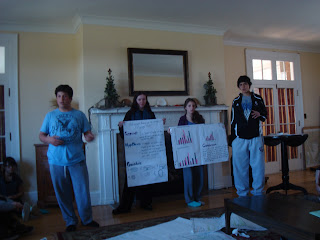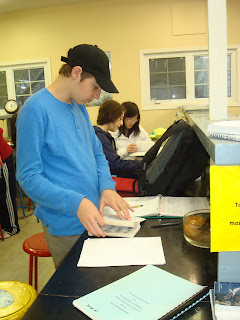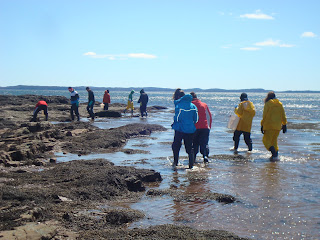Later in the morning, and in to the afternoon, students presented their findings from the zonation data collection completed on Friday as well as their results from the invertebrate behaviour experiments.

The tide was already on its way in when students arrived at Pottery Creek Saturday morning.
A Clam worm is found!
The clam worm released into the water 'swims'.
Students looking for more interesting worm specimens.
The gulls were looking for 'specimens' of their own.
This group was presenting their findings from the zonation activity.
Here the students present their findings on the rate at which Green Sea Urchins will right themselves when flipped over.
















































